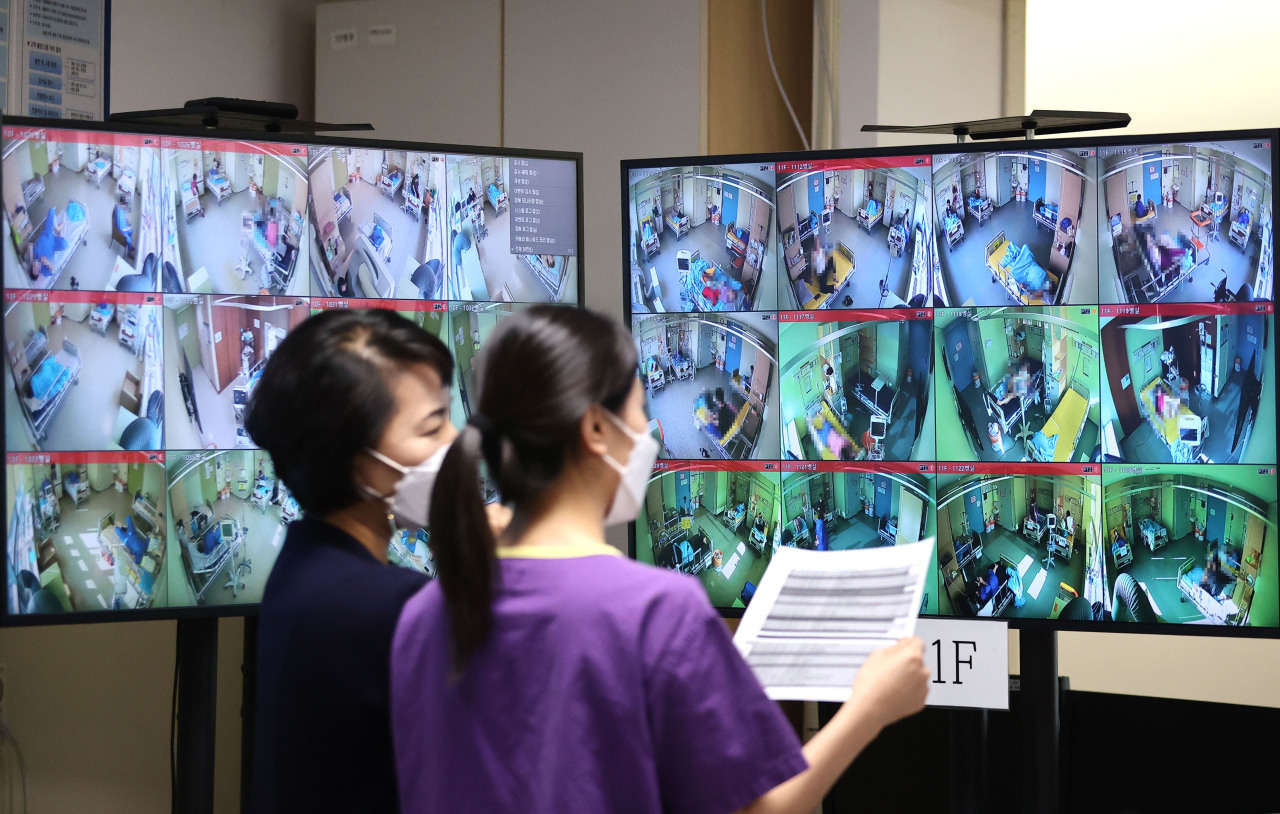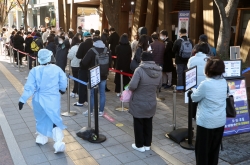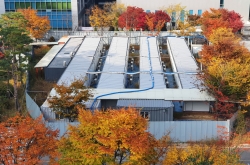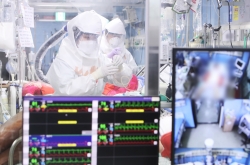Hospitals in Greater Seoul are seeing their intensive care rooms fill up again, just 14 days since South Korea began its phased return to normal. By Sunday afternoon, 76 percent of the capital city’s beds for the sickest patients with COVID-19 were full, crossing the threshold of 75 percent for triggering an emergency response.
Despite the figures, the government is not activating the emergency action plan, which involves restoring social distancing requirements and other curbs that had been lifted, explaining that the “overall situation” will be considered before retracting the progress toward normal.
Son Young-rae, spokesperson for the Ministry of Health and Welfare, said in a Monday briefing that the relevant ministries as well as the Korea Disease Control and Prevention Agency were “discussing which metrics would be used in deciding whether to halt or move forward with the phased return to normal,” the details of which will be unveiled the following day.
In briefings last week, as intensive care admissions rose at record levels in the Seoul area, Son ruled out going into emergency response mode by city or province, saying that so far the trends “fell within the predicted range.” “As Korea exits from the pandemic, some increase in patient numbers is due,” he said, adding, “that in itself does not call for pausing our return to normal.”
Through a series of announcements ahead of the Nov. 1 reopening, however, the government had stated that with the new scheme, the volume of intensive care hospitalizations and deaths, rather than new infections, will be considered, and each municipality will have more autonomy over how the rules apply.
Minister of Health and Welfare Kwon Deok-cheol told a government meeting Monday the country’s health care surge capacity would be boosted to alleviate the burden.
The minister admitted that a week into the initial phase of the country’s exit from the pandemic, more than 400 patients were undergoing intensive treatment each day on average, hovering near the surge capacity of 500.
He pointed to colder temperatures forcing people to mingle indoors, breakthrough infections affecting older adults and about 10 million people remaining unvaccinated, including minors, as the main factors behind the renewed climb in hospitalizations.
“As a result of the administrative orders to hospitals to convert more of their beds to accept intensive care COVID-19 patients, coupled with expanded at-home care scheme, our health care systems will be able to withstand up to 7,000 cases occurring a day,” he said.
While the nationwide intensive care bed occupancy rates stood at 62 percent on Sunday, the situation was worse in populous Seoul and adjacent cities. By 5 p.m., 78 percent of Seoul and Incheon beds were occupied. In all of Gyeonggi Province, Sunday’s rate was 73 percent. In the last two weeks, at least 125 Seoul patients had to travel outside the city to North and South Chungcheong provinces or even farther to find a bed.
The COVID-19 policy adviser to the prime minister, Dr. Jung Jae-hun, said in a phone call that as Korea was “not pursuing efforts to slow the spread, i.e. social distancing program,” distributing booster vaccinations faster and increasing bed availability were paramount to counter the recent upticks in hospitalizations.
“Ultimately all adults ages 18 and older will need to get boosters, which are rolling out in the order of priority,” he said. Over the past month since the booster rollout began with front-line workers and nursing home residents, slightly over 1 million people have received the extra shot.
Recipients are eligible to receive booster shots six months after the completion of the primary vaccine series, but Jung has proposed moving that forward to five months, or possibly earlier.
Dr. Eom Joong-sik, an infectious disease specialist at Gachon University Medical Center in Seoul’s neighboring Incheon, said assessing the health care system capacity had to go beyond merely counting the number of empty beds.
He complained that orders from the government overlooked different circumstances facing each hospital. He said that at his hospital, overworked intensive care nurses were fleeing their jobs.
“None of this is being taken into account, and across the board hospitals are mandated to free up beds regardless of staffing,” he said. “We don’t have sufficient workforce to meet the patient demands, even if we were to add more beds.”
Unlike during the previous pandemic winter, non-COVID-19 care needs were anticipated to rise, according to Eom. Other common respiratory viruses were feared to thrive as people are out and about again under Korea’s new “living with COVID-19” strategy.
“Winter is typically a challenging time for hospitals. Left untackled, the usual burden on top of the continued spread of COVID-19 are going to push hospitals over the edge,” he said.
As beds become scarce, more people are dying with COVID-19 now compared to summer, when death rates had dropped to around 0.3 percent from over 3 percent in January, in the midst of the devastating wave of nursing home outbreaks. In October, the rate has shot up to nearly 0.7 percent, which rose further to record 0.8 percent over the first two weeks of November.
The ministry says the unvaccinated are driving the uptick in deaths, urging people who have yet to get the vaccine to do so.
“Among the vaccinated, the rate of hospitalizations is only 0.57 percent, which is roughly one-fifth of the 3.1 percent seen among the unvaccinated,” said Park Hyang, a senior Health Ministry official. “In unvaccinated people ages 80 and older, the death rates were 15.3 percent compared to just 3.56 percent in vaccinated people of the same age cohort.”
Korea entered the first phase of its return to normal on Nov. 1 upon meeting the national vaccination target of 70 percent. As of Sunday midnight, 81 percent of 51 million people here had received at least a single round of vaccination, while 78 percent had been fully vaccinated.
By Kim Arin (
arin@heraldcorp.com)











![[Weekender] Korea's traditional sauce culture gains global recognition](http://res.heraldm.com/phpwas/restmb_idxmake.php?idx=644&simg=/content/image/2024/11/21/20241121050153_0.jpg)